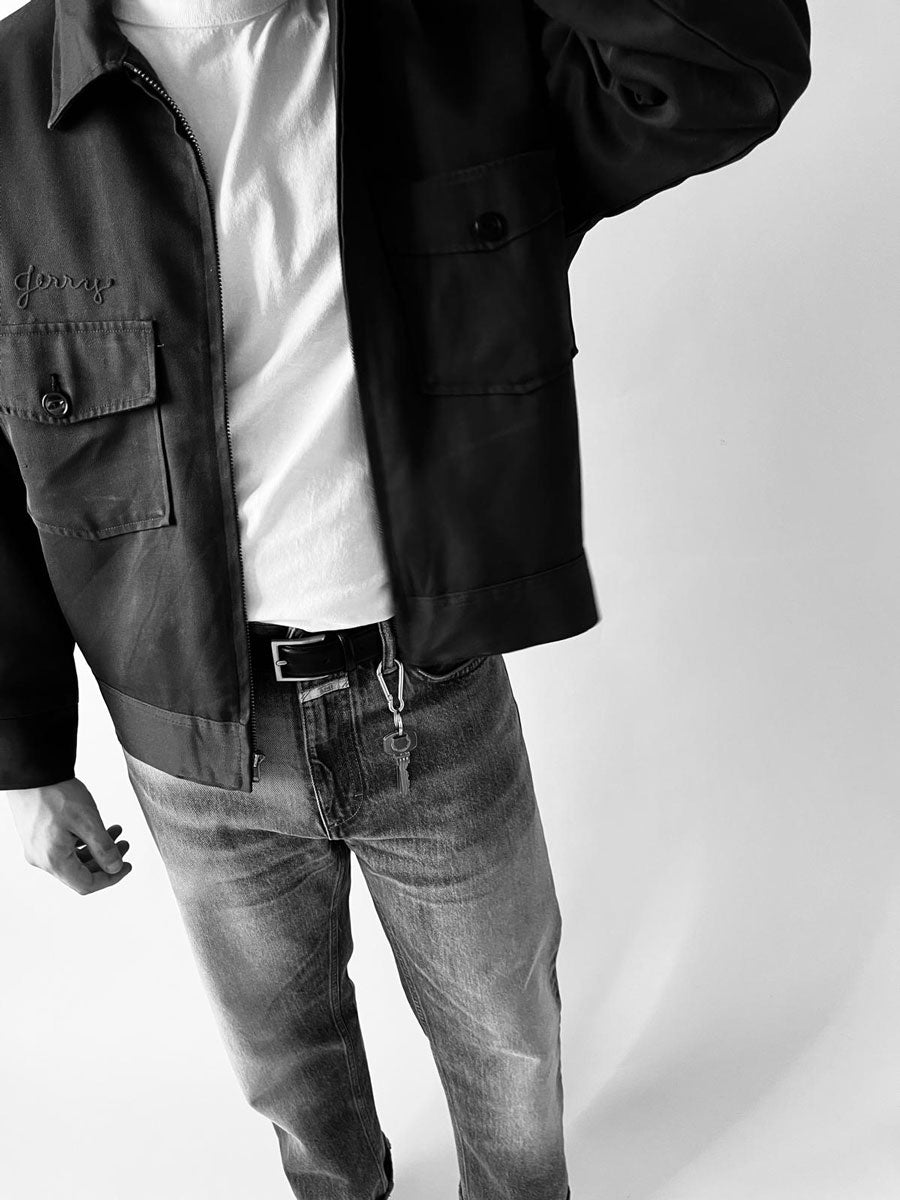The expansion process:
There were countless difficulties faced by Carhartt over the course of its more than one hundred year history, difficulties that made it the solid company known today.
However, in the late 1950s, the company began a major expansion process. In the late 1960s, Carhartt acquired two companies: Crown Headlight and Finck & CO of Detroit.
During this period, an unprecedented event occurred in Carhartt's history: the company began producing items under a different label, Carhartt-Headlight-Finck.
This event remained unique and unrepeatable in the history of the brand.

But who were these two companies?
Let's start with Finck & CO in Detroit. In the early 1900s, Finck's "Detroit Special" coveralls were renowned for their denim quality, a symbol of rugged clothing for workers. WM Finck & Co., with the slogan "Wear Like a Pig's Nose," manufactured coveralls, dust coats and combination suits in Detroit. The buttons on their clothing featured a pig's head with "FINCK" and "DETROIT."
William Muir Finck began the workwear manufacturing business in New York, working for his uncle Charles Fitzsimmons in 1878, and then moved the company to Detroit in 1885.
After working for Hamilton Carhartt & Company, Finck founded his own company in 1902. Finck's was known for its aggressive advertising, with slogans such as "The man who thinks, invests in FINCK'S."
They promoted quality and membership in the Union. During World War II, the company adapted its marketing to also target women, introducing terms such as "modest." WM Finck & Co. built a strong, union-friendly reputation.
Ironically, in 1960, the Finck brand was acquired by William's former employer, Carhartt, Inc., and ceased to exist.
Regarding the Crown Headlight , information is more scarce. In 1897, William Carter founded Larned, Carter & Co.
Although the company was based in Michigan, why it settled in Detroit is unclear. Subsequently, Abner E. Larned joined the management as president, contributing to the company's growth.
In the 1920s, the company acquired a production system that integrated spinning and sewing of fabrics, improving the consistency of its products. By the 1930s, with the acquisition of Crown Headlight, the company began operating under the name "CROWN-HEADLIGHT," expanding its commercial and advertising presence.
In the 1960s, mergers and acquisitions led Larned, Carter & Co. to join Carhartt.
A unique parenthesis in Carhartt's history
This transition period represented a unique parenthesis in Carhartt's history, uniting tradition and innovation under a single label.
The brief collaboration between these historic brands demonstrates Carhartt's ability to adapt and grow, while maintaining its commitment to quality and craftsmanship.


